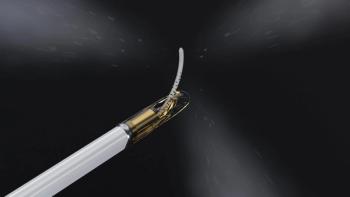
New data answer critics’ fears about impact of breast MRI
Research presented at RSNA 2007 bolsters the role of MR imaging for preoperative surgical planning in patients with known breast cancer and in working up the challenging invasive lobular carcinoma.
Research presented at RSNA 2007 bolsters the role of MR imaging for preoperative surgical planning in patients with known breast cancer and in working up the challenging invasive lobular carcinoma.
Greater utilization of dynamic contrast-enhanced MRI at the University of California, San Diego over a six-year period helped improve surgery planning for tough cases without hiking mastectomy rates, according to a retrospective study presented by Dr. Christopher Comstock.
The results may ease critics' minds.
"Preoperative MRI has been shown in multiple studies to help change surgical management in a significant number of patients. However, some critics have raised concerns about the potential of preoperative MRI to increase mastectomy rates and cause delays in surgery, due to clinically insignificant disease detected by MRI," said Comstock, chief of breast imaging at UCSD.
Critics are less likely to cite lumpectomy's positive margin rates, which range from 30% to 40% nationwide and result in multiple surgeries to obtain clear margins, he said.
The UCSD study evaluated the effects of preoperative MRI on surgery in terms of delays and margins on patients with biopsy-proven breast cancer who underwent surgery at UCSD from 2000 to 2006. In the first two years of the study period, only one patient had preoperative MRI. By the latter part of 2003, 40% to 50% of surgical patients were undergoing the imaging study.
The lumpectomy negative margin rate was higher for those who had preoperative MRI than for those who did not have the study (86/107, 80% versus 172/229, 75%).
"This may not seem like a big difference, but those who underwent preoperative MRI had larger or more complicated cancers or parenchymal patterns," Comstock said.
Lumpectomy negative margin rates reached 90% by 2006, a sign of better communication between radiologists and surgeons to maximize surgical outcomes and minimize delays, Comstock said.
Despite increasing utilization of preoperative MRI, mastectomy rates remained stable throughout most of the study period. The results are partly a credit to the surgeons who used the MRI information wisely and counseled patients appropriately, Comstock said. Furthermore, the researchers did not see a statistically significant increase in the time to surgery for patients who underwent preoperative breast MRI.
In another study presented during the same RSNA session, researchers assessed the value of MRI in working up patients with histologically proven invasive lobular carcinoma, a challenging finding for breast imagers. The study included 57 patients with histologically proven invasive lobular carcinoma who had had the following studies: mammography, ultrasound, MRI, and physical exam in conjunction with imaging findings.
Researchers assessed the value of the various imaging studies in measuring tumor size and assessing the presence of multifocal and multicentric disease.
MRI, with a sensitivity of 100% and specificity of 87%, far outperformed the other modalities for evaluation of tumor size and presence of disease, said Dr. Maestro Catherine of the French Federation of Cancer Centers.
"MRI is unquestionably valuable for evaluating invasive lobular carcinoma. Not only is it the most accurate for estimating tumor size, which is important for surgeons performing conservative treatment, it is also highly sensitive for detection of multifocality and multicentricity," Catherine said.
Due to the drawback of lower specificity, however, histologic evidence is still required prior to surgery, he said.
In the study, the use of MRI resulted in a change of patient management in 49% of cases, often indicating that more extensive surgery was required rather than breast conserving treatment.
Newsletter
Stay at the forefront of radiology with the Diagnostic Imaging newsletter, delivering the latest news, clinical insights, and imaging advancements for today’s radiologists.


























